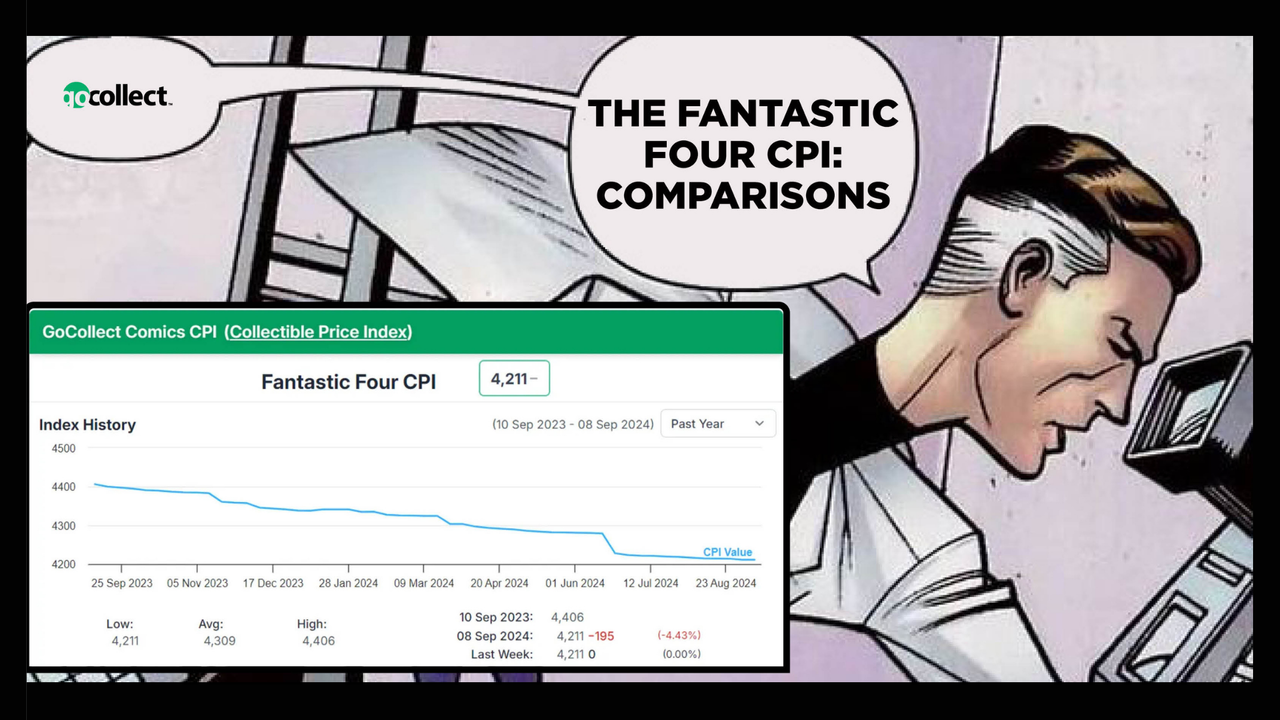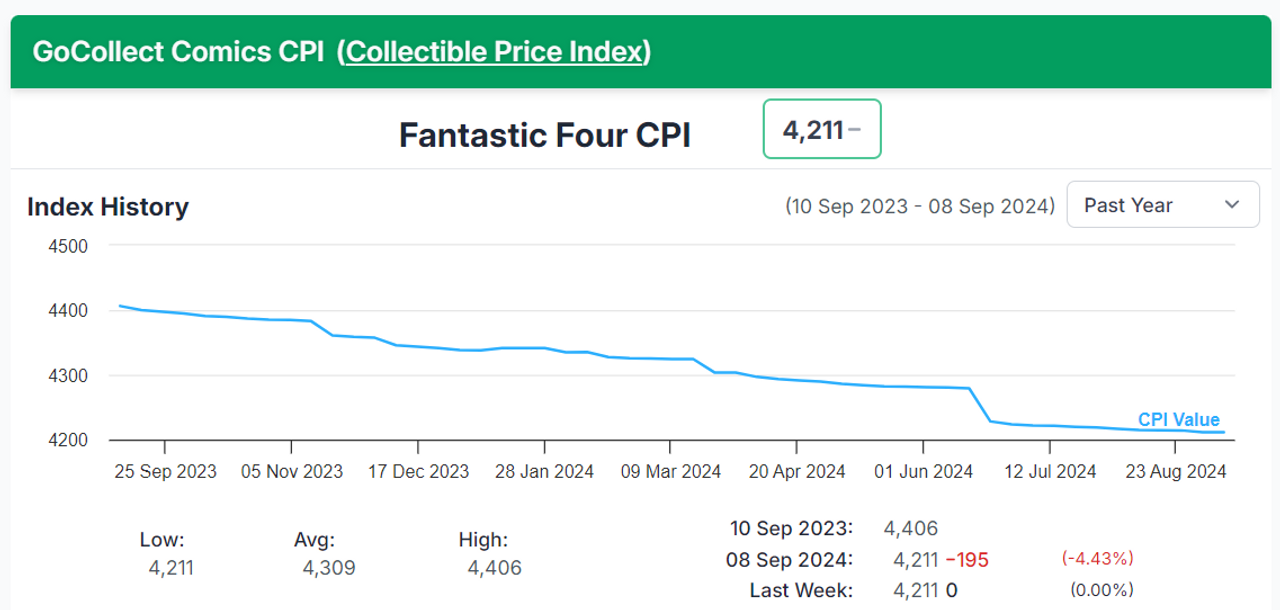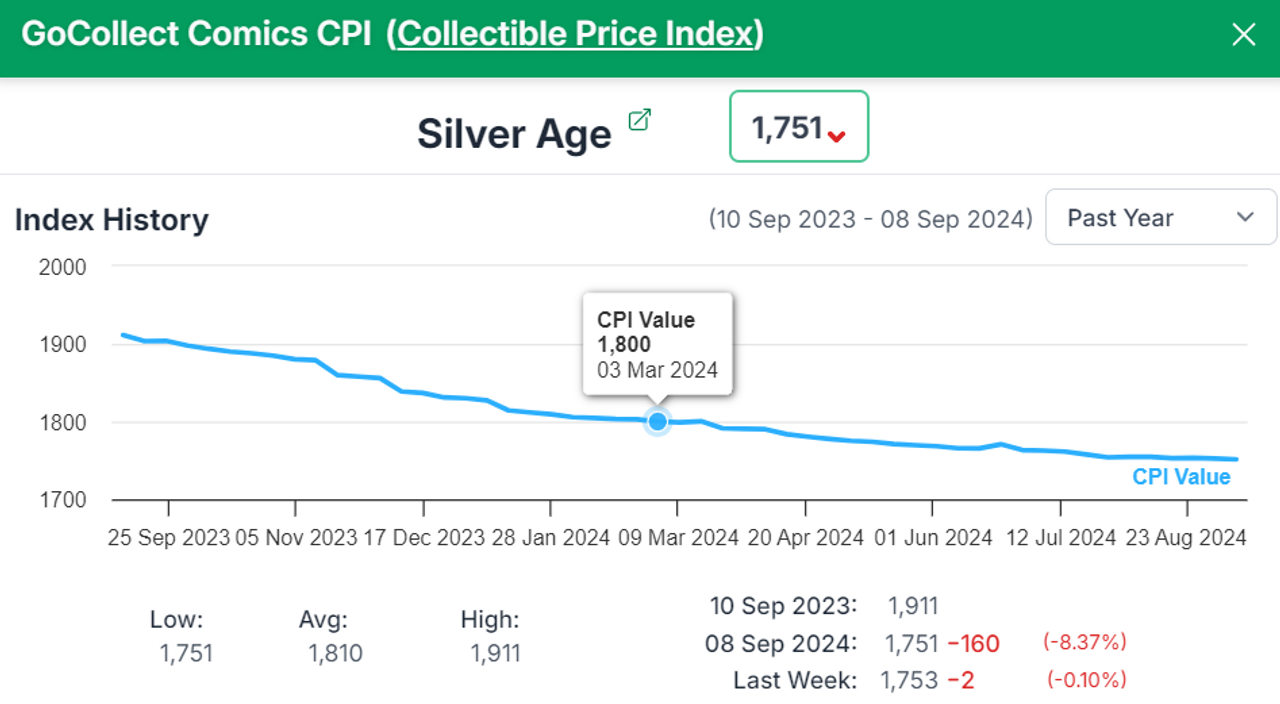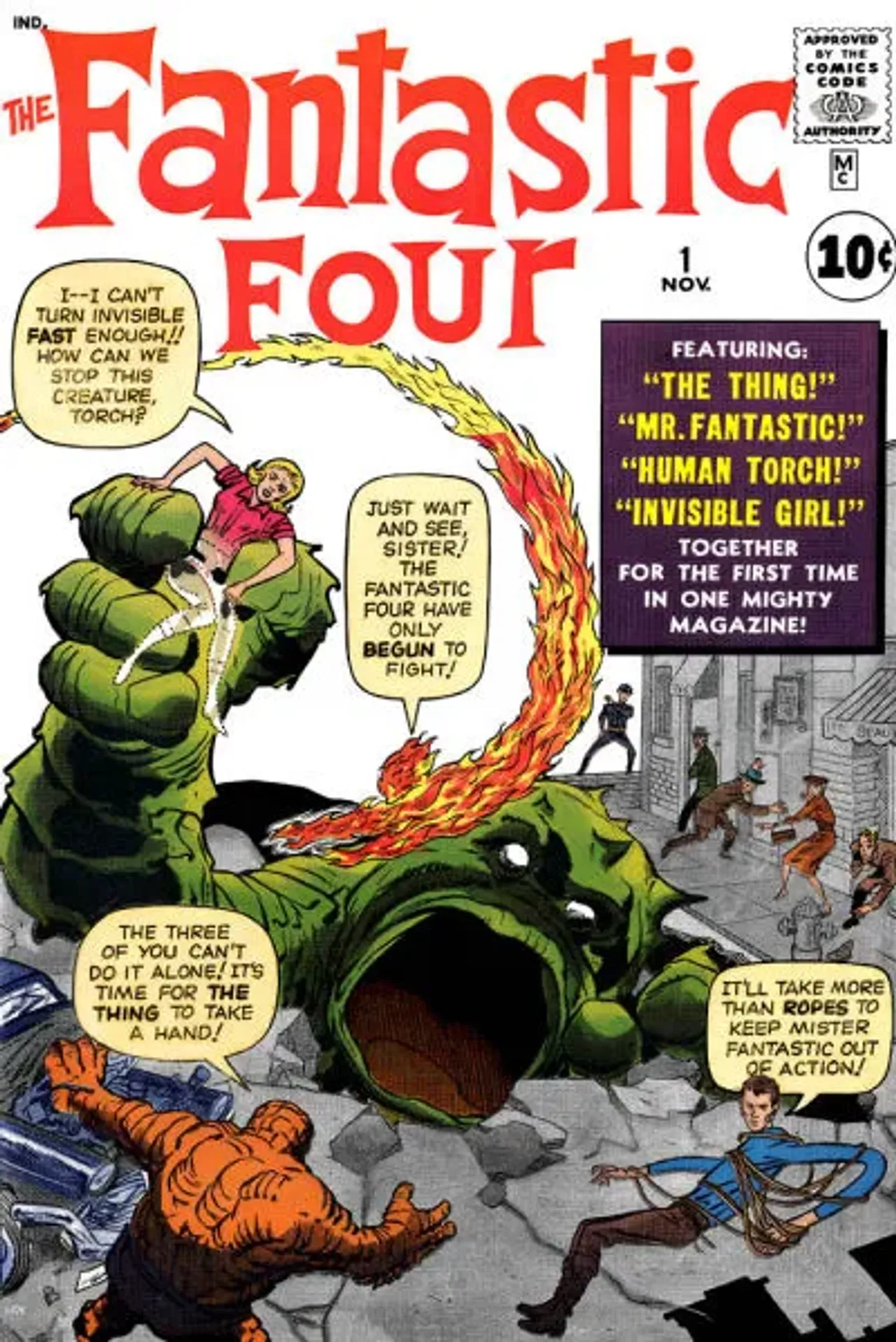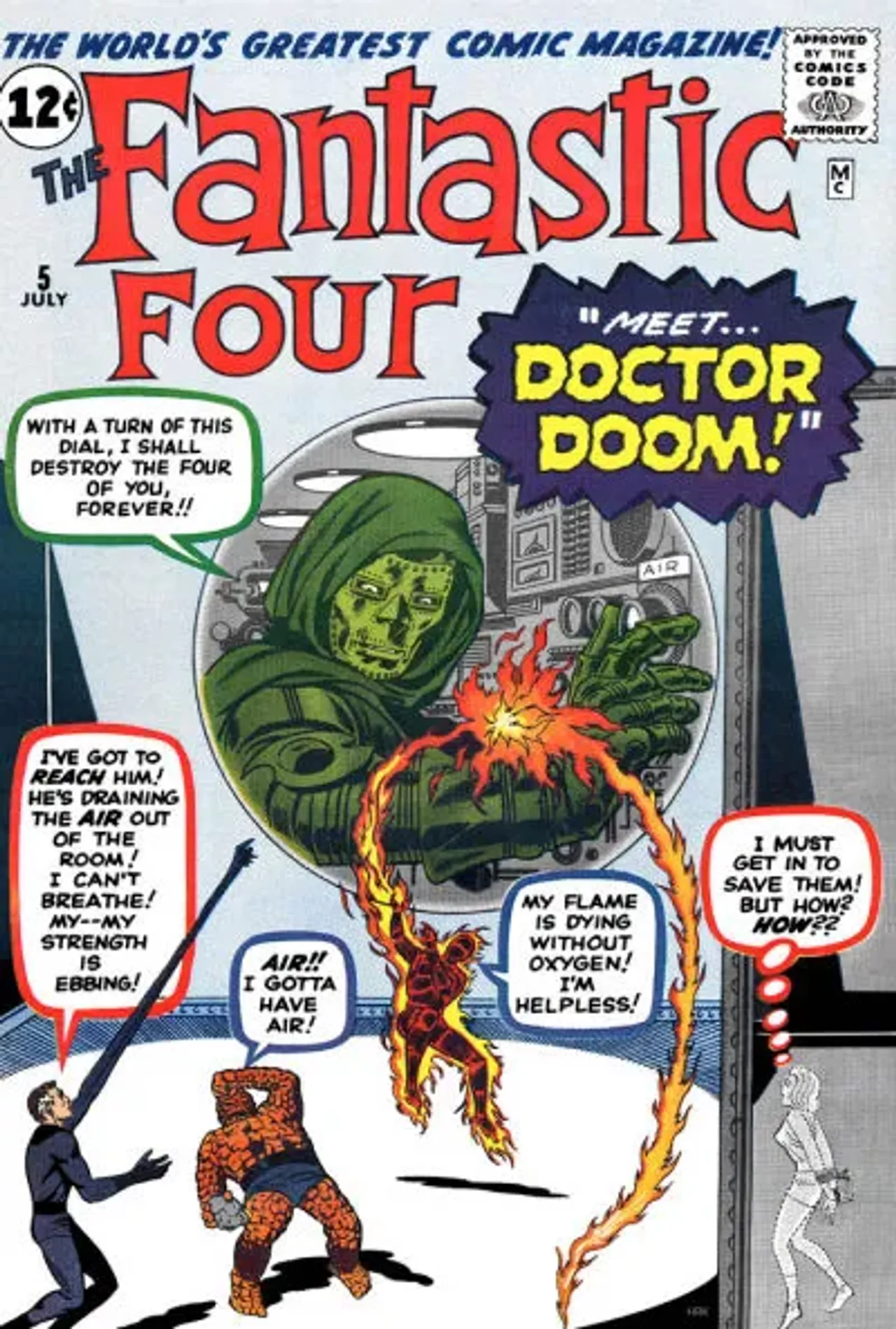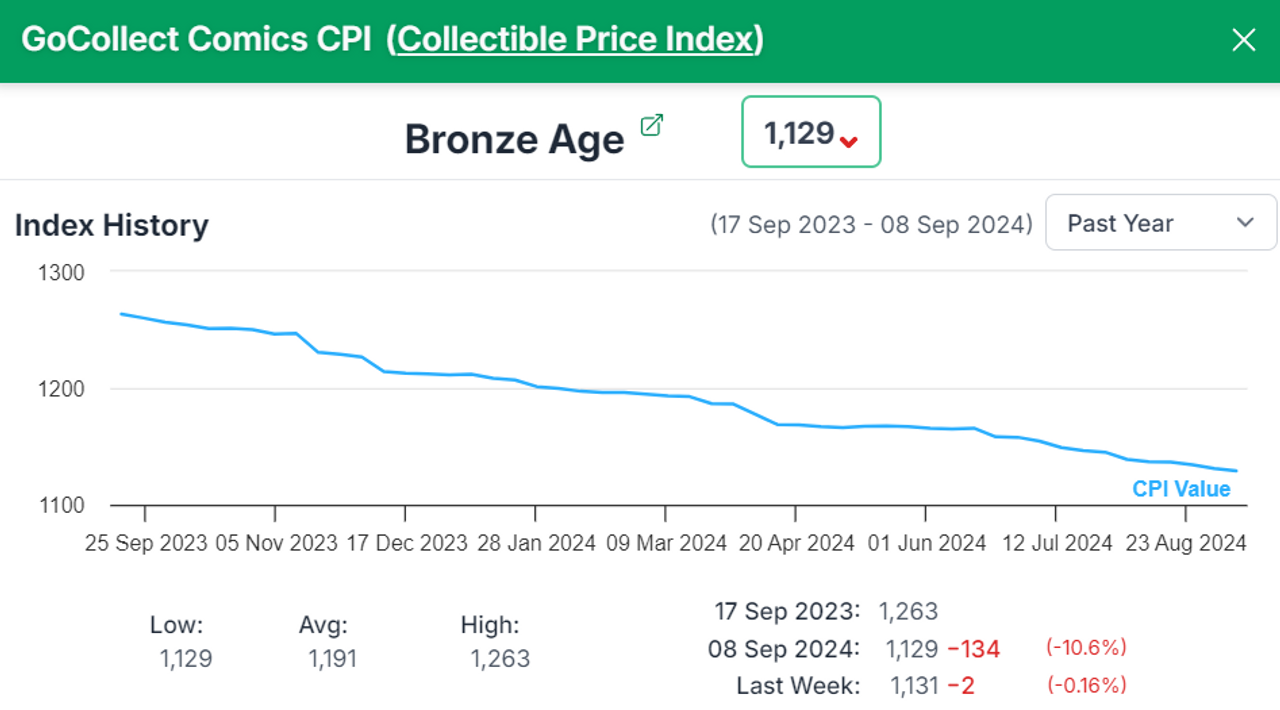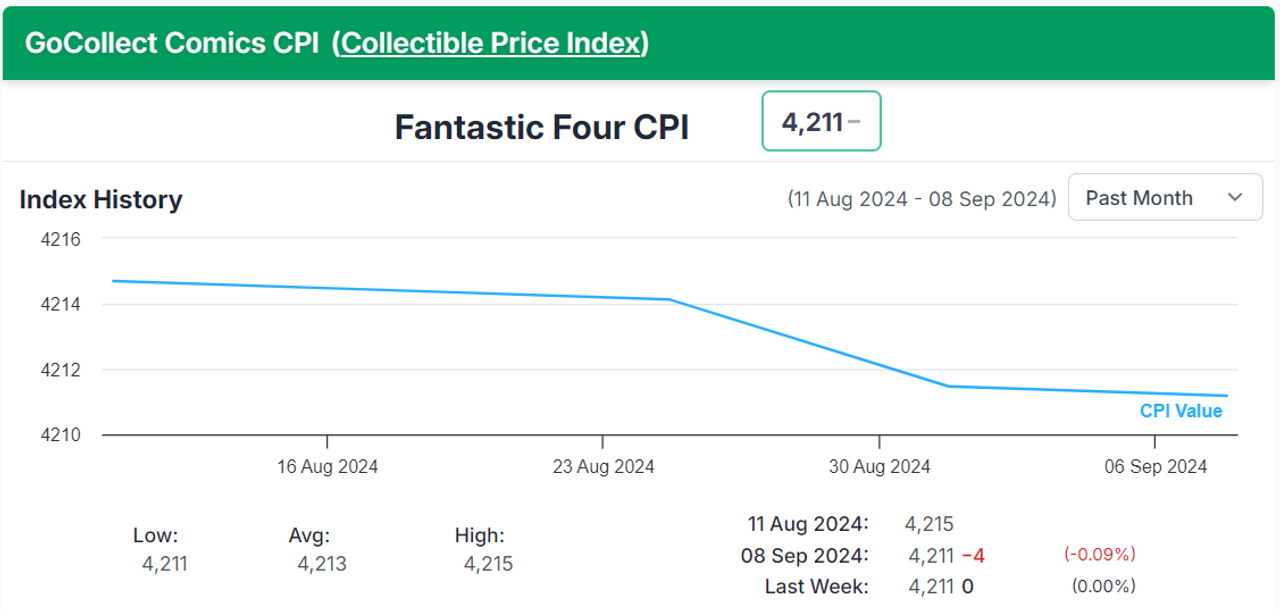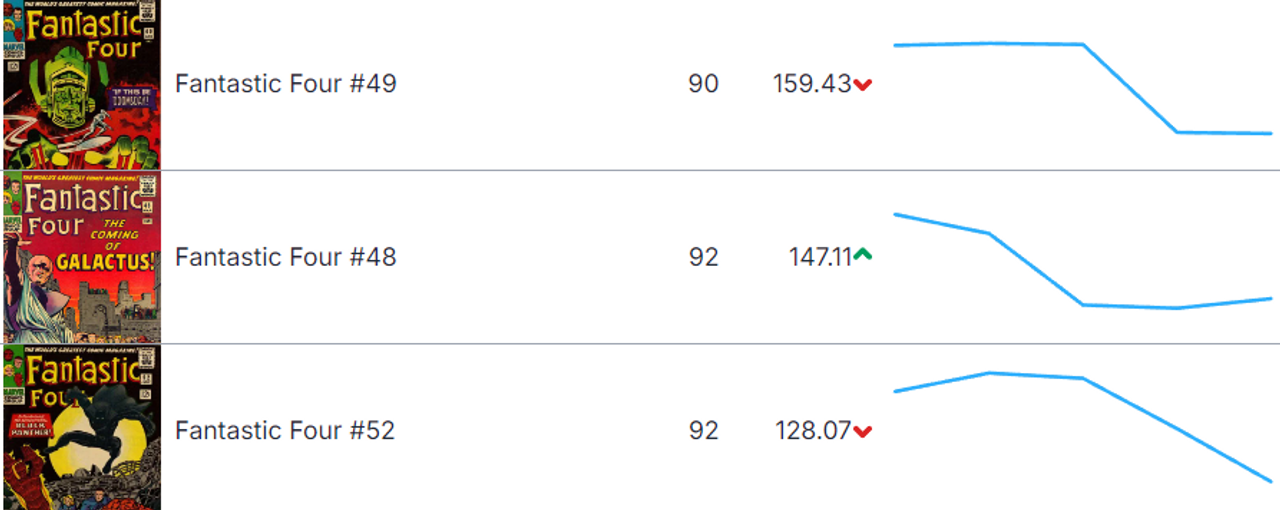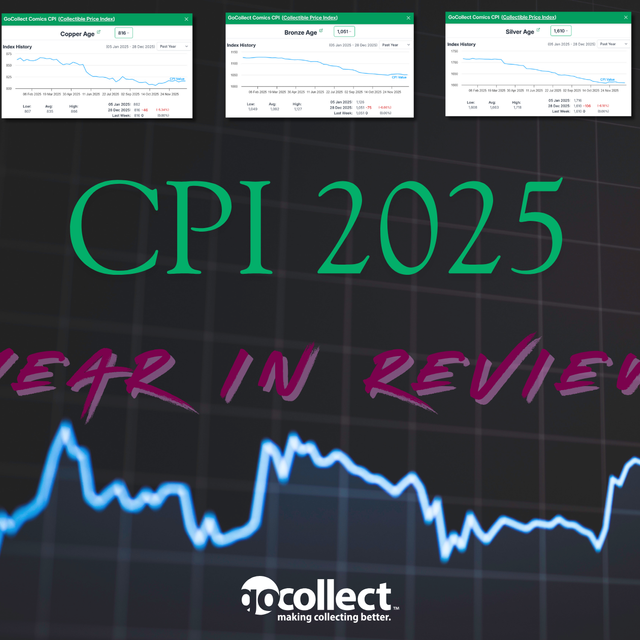Welcome back to our blog series about the Fantastic Four CPI! This time, we’re going to take a look at the Fantastic Four CPI and see how it compares to other indexes. We’ll also see how the index has changed in the past couple of weeks and what that means for your collection or future purchases.
Fantastic Four CPI vs. the Silver Age CPI
Before we get into our CPI comparisons, I strongly encourage you to peruse the Fantastic Four CPI. There’s a ton of cool information in there and it’s worth checking out the individual issues that make up the books in this collectible price index.
For this first comparison, we’ll be looking at the one-year CPI for both the Fantastic Four and the Silver Age. The first thing you’ll notice is that, while both indexes are down over the past year, the decline has been steeper for the Silver Age. The Silver Age CPI has fallen 8.37% while the Fantastic Four CPI is down 4.43%.
Comparing the weeks of steepest decline, we see that the Silver Age CPI lost 1% of its value in its worst week – November 12 to November 19, 2023 while the Fantastic Four CPI lost 1.2% of its value the week of June 16 to June 23, 2024.
What happened that week to cause the uncharacteristic drop in the Fantastic Four CPI? An 8.5 graded copy of Fantastic Four #1 sold in the June 23 Heritage auction for $144,000, dropping the average of the last four sales in that grade from $233,750 to $182,250.
That’s a big hit for a big book, particularly one that represents a full third of the Fantastic Four CPI value. That’s why it’s important to understand the percentage of value in an index that a particular comic represents. A bad week for Fantastic Four #1 is much worse for the index than a bad one for Fantastic Four #353. It’s a large part of the reason we chose to make the Big Spenders Club CPI, so big sales – like the recent sale of a 9.6 Fantastic Four #1 (more on that later) – won’t skew an entire index overly much. However, you can’t have a series CPI without the first issue. We’ll make sure as we continue this series to note how much individual comics are affecting the value of the CPI as a whole.
Back to the comparison between the Fantastic Four CPI and the Silver Age CPI, there are a few applicable factors to note that make the comparison apt. First, a large percentage of the comics included in the FF CPI, and the resulting value of those books, are from the Silver Age as the vast majority of key Fantastic Four issues were published in that era. Second, six of the comics in the Silver Age CPI – 12% of the total and the top comic in the index: Fantastic Four #5 – also appear in the FF CPI. Both indexes were affected by sales of those six issues. We’ll get into deeper comparisons in future blogs in this series, but suffice it to say that, overall, had you invested in the Fantastic Four index a year ago, your losses would have been slightly less than half those you would have seen had you invested in the Silver Age index.
Bronze Age CPI Comparison
Comparison between the Bronze Age CPI and the Fantastic Four CPI is a far less applicable one in that only a single issue – Fantastic Four #112 – is shared between the two. Additionally, the Bronze Age CPI has taken a pounding in the past year, losing 10.6% of its value. It is worth noting, however, that investment in the Fantastic Four CPI would have been somewhat less damaging an investment than purchasing the entirety of the Bronze Age CPI a year ago.
It becomes a moot point to compare the Fantastic Four CPI to the Copper or Modern Age CPIs. There are no shared issues between the FF CPI and either of these indexes. As with most long-running Marvel series, the primary value is in Silver Age issues and it’s there where we will continue to look for future index comparisons.
Recent Fantastic Four CPI Movement
Looking at the Fantastic Four CPI over the past month, we see an index that has lost a scant 0.9% of its value. Much of that has been driven by this trio of books:
Together, Fantastic Four #49 (down 1.4% in the past month), Fantastic Four #48 (big drops in the 9.2 and 6.0 grades), and Fantastic Four #52 (8.5 grade lost $400 in value) represent 10% of the index’s value. A rough month for that significant a portion of the index is sure to affect the index as a whole without equivalent gains in other parts of the index. We’ll be investigating individual issues and how they’re affecting the index as a whole beginning with the next blog. All three of these issues are at their lowest point in the past year and could be considered potential buy opportunities. If you’re considering selling, however, you may want to wait until you see a sustained lift in value.
Final Note
Of course, we can’t leave the big news hanging without a comment. As mentioned earlier, a 9.6 graded copy of Fantastic Four #1 sold in the September 15 Heritage auction for $2,040,000. It’s the only recorded sale for one of two copies in the highest grade in the CGC census. It tops the previous record holder - a 9.2 selling in 2022 for $1,500,000 - and marks this issue as one of the highest priced comics ever sold. One-of-a-kind books, when they come up for sale, still have a reasonable chance of performing well – even in a down market.
